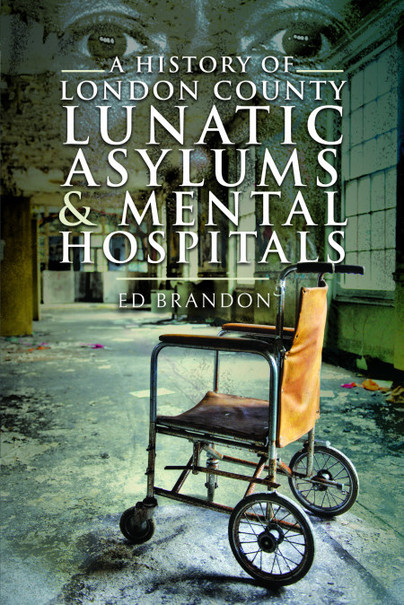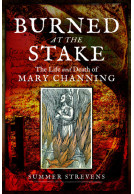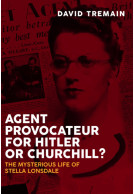A History of London County Lunatic Asylums & Mental Hospitals (Paperback)
Imprint: Pen & Sword History
Pages: 224
ISBN: 9781399008730
Published: 28th July 2022
Last Released: 26th July 2024
(click here for international delivery rates)
Need a currency converter? Check XE.com for live rates
| Other formats available | Price |
|---|---|
| A History of London County Lunatic… eBook (46.6 MB) Add to Basket | £6.99 |
From the Middle-Ages onwards, London’s notorious Bedlam lunatic hospital saw the city’s ‘mad’ locked away in dank cells, neglected and abused and without any real cure and little comfort. The unprecedented growth of the metropolis after the Industrial Revolution saw a perceived ‘epidemic’ of madness take hold, with ‘county asylums’ seen by those in power as the most humane or cost-effective way to offer the mass confinement and treatment believed necessary.
The county of Middlesex – to which London once belonged – would build and open three huge county asylums from 1831, and when London became its own county in 1889 it would adopt all three and go on to build or run another eight such immense institutions. Each operated much like a self-contained town; home to thousands and often incorporating its own railway, laundries, farms, gardens, kitchens, ballroom, sports pitches, surgeries, wards, cells, chapel, mortuary, and more, in order to ensure the patients never needed to leave the asylum’s grounds.
Between them, at their peak London’s eleven county asylums were home to around 25,000 patients and thousands more staff, and dominated the physical landscape as well as the public imagination from the 1830s right up to the 1990s. Several gained a legacy which lasted even beyond their closure, as their hulking, abandoned forms sat in overgrown sites around London, refusing to be forgotten and continuing to attract the attention of those with both curious and nefarious motives.
Hanwell (St Bernard’s), Colney Hatch (Friern), Banstead, Cane Hill, Claybury, Bexley, Manor, Horton, St Ebba’s, Long Grove, and West Park went from being known as ‘county lunatic asylums’ to ‘mental hospitals’ and beyond. Reflecting on both the positive and negative aspects of their long and storied histories from their planning and construction to the treatments and regimes adopted at each, the lives of patients and staff through to their use during wartime, and the modernisation and changes of the 20th century, this book documents their stories from their opening up to their eventual closure, abandonment, redevelopment, or destruction.
Ed Brandon has created a well research and engrossing book. Written with a wonderful narrative I learned more about Asylums than i did before. Its a heavy topic and it a massive way a tragedy.
NetGalley, Zoe Pollock
"A History of London County Lunatic Asylums & Mental Hospitals" edited by Ed Brandon is a comprehensive exploration of the development and evolution of mental health care facilities in London. The book delves into the history, architecture, treatment methods, and societal attitudes towards mental illness from the establishment of the first asylums to the present day. Through detailed research and archival materials, the book sheds light on the challenges faced by patients, staff, and administrators, as well as the changing perspectives on mental health over time. It offers valuable insights into the past and present of mental health care in London and its impact on individuals and communities.
NetGalley, Cammie Onesto
This book looks at the various Asylums and Mental hospitals in and around London, the book looks at the history, reasons why we have them, how they were run, some of the treatments and care procedures that took place and finally some of the more well known cases that come from these hospitals. As I’m sure most people will know, people with mental health problems have never really had the best or most suitable help and care, always left near the bottom of the pile for concern. This subject always tends to be a bit grim reading, but what I enjoyed most about this book was the fact that the majority of the book is based around the hospitals with a number of patient stories thrown in, but I enjoyed the fact that the book was more about the hospitals and the way it was run. A fascinating book and one that people who like a bit of grim reading will enjoy.
The History Fella
Read the full review here
Rating: 5 out of 5 stars
NetGalley, Elizabeth Means
The author brings to life how the asylums and mental hospitals were built, as well as their history, the treatment of the patients , plus you get to meet and read about these who was considered to be famous. One of the the things I loved if not my all time favorite part of the book was the black and white photos you get, they definitely helped the story as well bring it even more to life . You can tell by the way author wrote the he did a lot of research on this topic and it showed though out the book.
I've always been fascinated with the history of mental hospitals and I thought this book was really interesting and taught me a lot about how things use to work. It's honestly so crazy how people were treated back then and what they would consider as "crazy". If you are like me, and enjoy learning about this stuff, or it's something you never thought about, this book will teach you a lot!
NetGalley, Kristina Marino
A fascinating insight in to how life was for the people of the time.. very emotional to read but glad that I did.
NetGalley, Stephanie Humphreys
Rating: 5 out of 5 stars
NetGalley, Rachel Sidwell (Gale)
Love books about Asylums and mental hospitals and just how the world has changed so much since a time when you went to one for basically being a woman. I found this history really interesting and now want to read more around Bedlam and other hospitals.
Rating: 5 out of 5 stars
NetGalley, Bethany Swafford
The Industrial Revolution saw a sudden increase in those perceived as ‘mad. ‘County asylums’ were seen as the most humane or cost-effective way to offer mass confinement and treatment to the patients.
I really enjoyed reading this. It was very informative on a topic that I am interested in but know little about. This book breaks down the ‘county asylums’ that were built in the Victorian era into the Edwardian era. Each operated with everything needed to ensure the patients never needed to leave the asylum’s grounds.
The author details the architect of each place, when they were built, some ‘famous’ patients who stayed in the asylum, and some of the treatments that were used. I especially appreciated the pictures showing the buildings, and what happened to the buildings when the asylums were closed down.
Readers who have an interest in the history of mental hospitals or even just an interest in architecture will no doubt enjoy this book.
Rating: 5 out of 5 stars
NetGalley, Wendy M Rhodes
This book is excellently written and well researched. Recommended.
As someone who works in psychiatric services and who, back in the days when these monstrosities were occuring, would have undoubtedly been flung into Bedlam or the like due to their own mental illness, I felt that it was important for me to read this book. In order to always better lives of the patients who come under the care of my service, I think that understanding the foundations that we base modern mental health care on is vital.
NetGalley, Danielle Henderson
This book is rich and dense in information, covering any questions that one could possibly have about the old mental hospitals and "lunatic asylums" from back in the day.
All I can really say is wow, and marvel in a kind of disgusted wonder at how utterly wrong doctors and the general public were about mental health. I for one am deeply thankful to have been born in a time where we've moved on from that kind of treatment of ill people!
From the Middle-Ages onwards, London’s notorious Bedlam lunatic hospital saw the city’s ‘mad’ locked away in dank cells, neglected and abused and without any real cure and little comfort. The unprecedented growth of the metropolis after the Industrial Revolution saw a perceived ‘epidemic’ of madness take hold, with ‘county asylums’ seen by those in power as the most humane or cost-effective way to offer the mass confinement and treatment believed necessary.
NetGalley, Michelle Coates
The county of Middlesex – to which London once belonged – would build and open three huge county asylums from 1831, and when London became its own county in 1889 it would adopt all three and go on to build or run another eight such immense institutions. Each operated much like a self-contained town; home to thousands and often incorporating its own railway, laundries, farms, gardens, kitchens, ballroom, sports pitches, surgeries, wards, cells, chapel, mortuary, and more, in order to ensure the patients never needed to leave the asylum’s grounds.
Between them, at their peak London’s eleven county asylums were home to around 25,000 patients and thousands more staff, and dominated the physical landscape as well as the public imagination from the 1830s right up to the 1990s. Several gained a legacy which lasted even beyond their closure, as their hulking, abandoned forms sat in overgrown sites around London, refusing to be forgotten and continuing to attract the attention of those with both curious and nefarious motives.
Hanwell (St Bernard’s), Colney Hatch (Friern), Banstead, Cane Hill, Claybury, Bexley, Manor, Horton, St Ebba’s, Long Grove, and West Park went from being known as ‘county lunatic asylums’ to ‘mental hospitals’ and beyond. Reflecting on both the positive and negative aspects of their long and storied histories from their planning and construction to the treatments and regimes adopted at each, the lives of patients and staff through to their use during wartime, and the modernisation and changes of the 20th century, this book documents their stories from their opening up to their eventual closure, abandonment, redevelopment, or destruction. Such an interesting and informative read!
An interesting insight into the history od London Counties asylums. I learned about the doctors ruling them and their views on insanity. Each asylum was also described in terms of architecture. I enjoyed the pictures illustrating the descriptions as well giving a clearer view of the buildings. A good read.
NetGalley, Christine Boos
I thought it was an excellent read about a subject that I only know a little about. The author has obviously done large amounts of painstaking research & it shows in the level of detail.
NetGalley, Gayle Noble
Rating: 5 out of 5 stars
NetGalley, Annie Buchanan
This is an annotated and thorough look at mental hospitals and their residents; from their lives to what they ate is covered unflinchingly and meticulously. The book's 7 chapters are arranged geographically with individual institutions' statistics in relevant subchapters. Although it's clearly well researched and annotated, the text is accessible and easy to read. The language is not rigorously academic (or intentionally obfuscated). Most of the descriptions reflect the tragic circumstances of the patients of these institutions and I was especially affected by the descriptions of the abandoned and derelict facilities, often abandoned in haste and left to ruin.
The author has included a solid cross-referenced index, chapter endnotes, and a bibliography for further reading. The text is enhanced throughout with clear historical photos and facsimiles of documents, hospitals, and grounds. These include interior and exterior photos of abandoned and derelict buildings.
Altogether interesting and educational and in many places, quite sad.
Five stars.
Rating: 5 out of 5 stars
NetGalley, Charlotte Papadopoulo
An extremely thorough analysis of London asylums and mental hospitals and the policies and practices that went with them. From what they ate to how they lived and so much more, this story gives you all you need to know , Brandon has certainly done his research and paints a comprehensive picture of times bygone (thankfully!)
Rating: 5 out of 5 stars
NetGalley, Lauren Counsell
I’ve always had knowings of the sort of things that went down within mental hospitals back in the day, but this book went beyond the ‘bad’. It praised doctors who fought for better living conditions and went through the layouts of the buildings. I enjoyed the stories of the patients within the walls, including someone considered to potentially be Jack the Ripper. It’s sad, but wasn’t mostly unknown to me, the sort of things you could end up in a mental hospital for. One reason I wasn’t aware of was for self-pleasuring. There were definitely aspects I wasn’t aware of before reading this, such as people being able to pay to visit the ‘mad’, like some sort of freak show. I wasn’t shocked though. The treatment of patients also varied between each asylum.
This is an extremely thorough and detailed book. I appreciated the layout of the book—each section went through the opening of the asylum to closure or present day—so it was easy to follow. I was worried it would read like one of those boring textbooks you’re forced to read in school, missing out the parts you want to know, focusing on details you’re not massively bothered about, but it kept me intrigued. I also appreciated the illustrations.
I enjoyed reading A History of London County Lunatic Asylums and Mental Hospitals by Ed Brandon. It was very well written and informative
NetGalley, Laura Fayle
This is a book about the early history of mental health facilities and asylum in London. From those Who let people view the patient entertainment to patient standing outside of the hospital begging for change to pay for the care and on and on even have short bios of the man who wanted to make healthcare for the mentally ill better. They do stray a little outside of London but for the most part is it is in London proper and if you love history you’ll definitely love this book it is a short read but an interesting one and one I highly recommend.
NetGalley, Janalyn Prude
Rating: 5 out of 5 stars
NetGalley, Brenda Carleton
The derogatory words lunatic asylum and mental hospital are synonymous with restraints, locked rooms, scant food, punishment, neglect and lobotomies and England is known for them in particular. It is disturbing to know that hundreds of years ago curious onlookers paid admission fees to ogle these poor creatures, fellow human beings, most of whom did not belong in institutions. Many were conveniently placed there by family citing demon possession and evil deeds, others were forcibly admitted after experiencing losses of family or crops. One memorable patient was admitted with "over excitement at the Great Exhibition"! I wonder whether said family members ever gave their deplorable actions a second thought or felt remorse. Undoubtedly some suffering from mental health problems did need extra care as we all know. A few patients in this book escaped or walked away only to return to "family". A few were very dangerous to others and others suicidal. Some institutions were more comfortable and respectable than others..
>From Medieval times these institutions changed a great deal. The author describes the history of madness (mad as a hatter, bedlam origins) and stigma as well as the revolutionary doctors such as Dr. Connolly who were desperate for their patients to receive excellent care and food, independence, beautiful architecture and magazines and books to read rather than tied up tightly all day and treated like sub humans. One of the stories which tugged at my heart most is that of the woman who was restrained so that she could not move, not even a finger to brush across her face or to roll over. Another is the detail that bath water was used for up to six people. Not only are the conditions, punishments and what a patient would see on his/her first day described but also the various building layouts, segregation of acute and chronic and staff quarters.
Many thousands of patients and staff entered the doors of eleven institutions which are the focus of this book from 1830s to 1990s. Funds were sparse (why bother "wasting" money on hopeless cases?) but at least many of the buildings were beautiful with thoughtfully-laid out kitchens, laundry facilities, canteens and churches. Eventually admission to a few became voluntary. A few buildings still stand and are used for other purposes but most were damaged by fire and/or bulldozed.
If you are eager to learn more about the history of asylums in England, this book should not be missed. It is well written with wonderful detail and includes photographs.
This was an interesting history, full of fascinating facts and details and would be the perfect companion to anyone researching asylums and mental hospitals.
NetGalley, Louisa Heaton
This is an informative, thorough resource for anyone interested in the history of asylums. I really appreciated the depth of information about each of the specific institutions and their practices at the time as well as how the differed between each hospital within a relatively small area. The chronological order of events within each section was easy to follow and kept me interested in the changes made over the life of each facility. It's definitely a book that I would have picked up during university and will probably pick up for myself after publication as well.
NetGalley, Amber Payne
I have always been interested in the macabre and dark things and as a result I have always been fascinated with asylums and their histories - which lets face it are about as dark as it gets, even their structures are dark and foreboding. This was such an interesting read that gave me more information on the things I already knew and taught me lots that I didn't know.
NetGalley, Aria Harlow
Rating: 5 out of 5 stars
NetGalley, Christy Martin
This is a very in-depth fascinating history of London’s mental hospitals. The author’s comprehensive descriptions of the buildings, historical medical practices and the doctors who influenced the mental health field gives the reader a look into history unlike I’ve read before and in a written style easy to follow. This could have read like a dry textbook, but the author weaves the stories of the asylums in a way that drew me in and kept me engaged. I’ve always been fascinated by the history of mental hospitals, and I ended this book wholly satisfied by the experience it lent.
Rating: 5 out of 5 stars
NetGalley, Debra Gape
A very well researched book giving the reader much more than dates, history's and locations of these buildings.
The reader is given some insight into what went on in these buildings. Horrific at times and often sad.
About Ed Brandon
Ed Brandon has been researching, studying, and writing about the former lunatic asylums and mental hospitals since first being asked to provide an image of one for a book in 2008. He has now visited around eighty such institutions across Europe, with his work featured in exhibitions, galleries, books, magazines, and online articles.
He has worked with Mencap, Bethlem Museum of the Mind, West London & Thames Mental Health Trust, Aneurin Bevan Health Board, Norfolk & Suffolk NHS Trust, Peterborough NHS Trust, and North East London Foundation Trust to create documents of their buildings after closure, and assisted numerous museums, galleries, local history groups, students, and others with information regarding the former asylums. He is also a contributor to countyasylums.co.uk and some examples of his photography can be found on www.facebook.com/ASOMUE
This is his first solo book detailing the history of some of these most complex, intriguing, and mythologised of building types.















